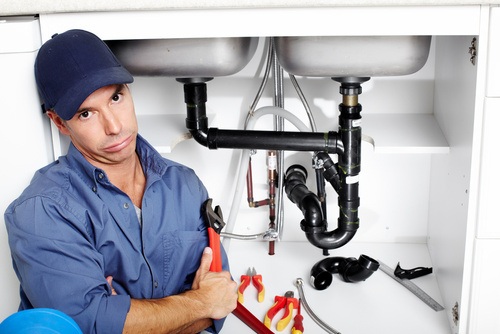
Plumbing problems can quickly add up to large repair bills if you neglect your system until the last possible moment. In fact, plumbing repair is one of the most frustrating and expensive home repairs. Taking preventive measures now to care for your system before there’s a major issue can help you trim your costs significantly. Try these tricks to avoid serious plumbing repairs and keep your system in shape for as long as possible.
Schedule an Inspection
You should have your plumbing system inspected regularly for signs of pending problems. If you’re moving into a new home or you’ve never had a professional inspection in your current home, now is the time to schedule a visit. A qualified inspector or plumber can properly inspect your pipes, drain lines, and water fixtures. He or she will alert you to issues like flawed pipes, hazardous tree roots, or areas that are prone to clogging and other issues. A prompt inspection now can help you identify potential problems early.
Locate the Main Water Valve
In the event of a leak, broken pipe, or other plumbing problem, it’s crucial to shut off your water as soon as you can. Make sure you know where the main water valve is located in your home. Don’t wait until you have water rushing into the house to scramble about looking for it. Show this valve to others in the home as well, so everyone knows how to turn off the water and minimize damage if something goes wrong.
Check for Leaks Often

Inspect your plumbing system for leaks on a regular basis. Keep a watchful eye out for water stains or puddles anytime you’re getting items out of a cabinet beneath the sink. Once every few months, place a few drops of food coloring in the back of your toilet tank before you go to bed at night. Check the water in the bowl when you get up in the morning. If it’s colored, there’s a leak in the toilet that you should service promptly before the issue worsens.
Purchase a Home Warranty
A home warranty is an effective way to handle the potential expenses associated with plumbing repairs. Plumbing systems and plumbing stoppages are included in both basic and total plans from Choice Home Warranty. Optional additional coverage is available for sump pumps, well pumps, and septic systems. With a home warranty, eligible repairs and replacements are included, so all you need to do is contact your provider to set up necessary repairs.
Prevent Major Clogs
Take preventive measures to stop major clogs from forming in your pipes. There are several small, easy actions that will help to protect your pipes from hazardous clogs.
- Use a drain screen in the bathroom to stop hair, jewelry, and other items from falling down the shower drain.
- Dispose of used cooking grease in an empty jug or can. Don’t pour it down the drain.
- Once a month, sprinkle half a cup of baking soda in the drain and follow with a cup of vinegar to clear buildups.
Clean Aerators Regularly
Faucet aerators add air to your water stream, so you’ll use less water in your everyday activities. Though they’re very useful for managing your water use, aerators can clog over time. If you’re struggling with little or no flow from your sink, remove the aerator from the faucet head and scrub it thoroughly to remove buildup. Soaking it in vinegar can help remove scale from hard water.
Insulate Your Pipes
If you live in an area with freezing temperatures in the winter, add insulation to your pipes to prevent freezing. It’s easy to slip foam pipe insulation over exposed pipes throughout the home and it also makes your home more energy efficient. Foam covers can be added to outdoor spigots too. Ensure that your pipes are in a safe, warm area by caulking any cracks in the walls and carefully sealing all windows and doors to prevent drafts. In winter, leave the faucets to drip in freezing weather. Leave cabinet doors open to allow warm air to get to the pipes when it’s cold out.
Watch Out for Your Washing Machine
Your washing machine uses a lot of water, and can lead to costly home repairs if it’s not maintained properly. Install a hose screen over the hot and cold water hoses leading to your washing machine to stop sediment from getting to the pumps and valves. Inspect the water hoses for your washer often, looking for cracks, blisters, and other signs of damage. If possible, upgrade from rubber hoses to steel models that are more durable.
Taking smart steps now can help you protect your budget from expensive plumbing repair in the future. Invest in maintenance, upgrades, and a home warranty early so you’re ready for anything that may come down the road.
